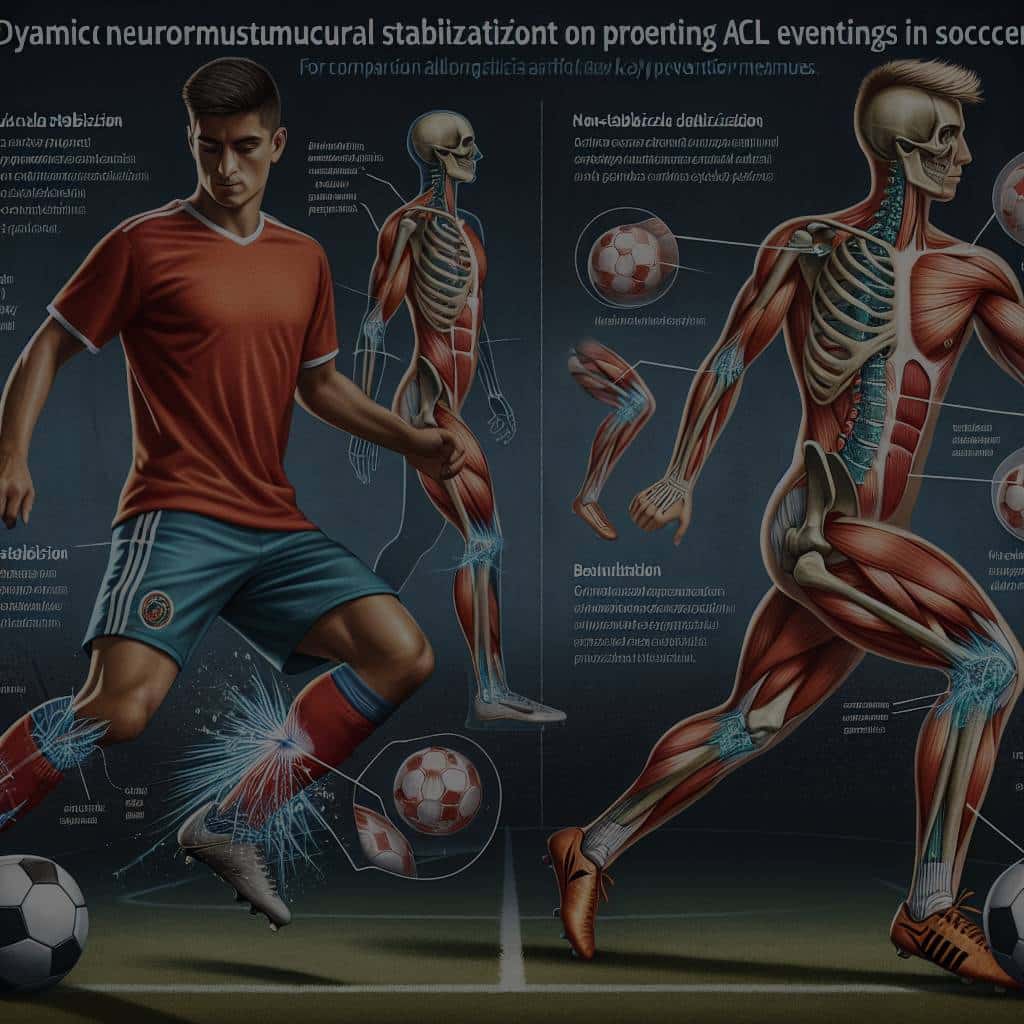What’s the Role of Dynamic Neuromuscular Stabilization in Preventing ACL Injuries in Soccer Players?

In the realm of sports medicine, the prevention of injuries is a topic of paramount importance. Among the potential injuries an athlete can suffer, those affecting the anterior cruciate ligament (ACL) are some of the most common and potentially debilitating. This is particularly true for soccer players. In this article, we delve into the role of dynamic neuromuscular stabilization in preventing such injuries, considering scholarly resources such as Google Scholar, PubMed, and Crossref to ensure a thorough and accurate analysis.
A Look at ACL Injuries in Soccer Players
The anterior cruciate ligament is a vital component in the anatomy of the knee. This ligament provides stability to the knee joint and assists in controlling the back-and-forth motion of the leg. Any injury to the ACL can seriously hamper an athlete’s performance, with soccer players being particularly at risk due to the nature of the sport.
Also to read : How to Create a Culturally Responsive Coaching Program for Diverse Athletic Teams?
According to various studies indexed in PubMed and Google Scholar, soccer players have a higher risk of suffering ACL injuries compared to other athletes. This is due to the sport’s demanding physical requisites, including sudden changes in direction, high-intensity sprinting, and the potential for player-to-player collisions.
The Significance of Neuromuscular Control
Before we delve into the potential benefits of dynamic neuromuscular stabilization, it’s important to understand the role of neuromuscular control in general. Neuromuscular control is essentially the interaction between the nervous and muscular systems. It enables athletes to produce and control movement while maintaining joint stability.
Also to discover : What Are the Best Approaches to Mental Toughness Training for Competitive Climbers?
In the context of ACL injury prevention, neuromuscular control becomes pivotal. As per scholarly articles on Google Scholar and PubMed, poor neuromuscular control, particularly in the hip and knee, increases the risk of ACL injuries. Conversely, good neuromuscular control can help athletes perform movements that reduce the strain on the ACL, thereby reducing the risk of injury.
Dynamic Neuromuscular Stabilization: A Crucial Prevention Strategy
Dynamic neuromuscular stabilization (DNS) is a training strategy designed to improve neuromuscular control. Based on the scientific principles of developmental kinesiology, DNS uses exercises that mimic the movement patterns of infants and young children. The goal is to improve an athlete’s body control and movement efficiency, ultimately reducing the risk of injuries.
Several scholarly articles found on Google Scholar, PubMed, and Crossref highlight the potential benefits of DNS in reducing the risk of ACL injuries. A study published in the American Journal of Sports Med revealed that DNS training significantly improved neuromuscular control in soccer players, thereby reducing their risk of ACL injuries.
Implementing DNS in Soccer Training
The implementation of DNS in soccer training involves a variety of exercises designed to improve body awareness, balance, and strength. These exercises often mimic the natural movement patterns of children, such as crawling, rolling, and squatting.
In soccer training, DNS exercises can be incorporated into warm-up routines, strength training sessions, and recovery practices. Consistent practice can improve neuromuscular control and movement efficiency, both of which can help reduce the risk of ACL injuries.
There is a growing body of scientific evidence supporting the effectiveness of DNS in injury prevention. However, it’s important to remember that DNS should be complemented with other injury prevention strategies, such as proper nutrition, adequate rest, and regular medical check-ups to ensure optimal results.
The Future of ACL Injury Prevention in Soccer
The use of DNS in preventing ACL injuries among soccer players signals a promising shift in sports med. As more studies are conducted and more data becomes available, it’s likely that we will see an increasing emphasis on this approach in professional and amateur soccer training programs.
Moreover, the potential impact of DNS extends beyond soccer. Many of the principles and practices of DNS can be adapted for use in other sports, potentially helping a wider range of athletes avoid ACL and other related injuries. The insights gained from the application of DNS in soccer can help shape injury prevention strategies in other sports, improving athlete health and performance on a much broader scale.
In the meantime, it is crucial for soccer players, coaches, and trainers to stay informed about the latest developments in the field of injury prevention. This includes understanding the principles of DNS, implementing them in training programs, and continually refining these strategies based on the latest research. Although preventing ACL injuries is a complex and multifaceted challenge, effective strategies like DNS can make a significant difference in protecting soccer players from this common and potentially career-threatening injury.
The Critical Role of DNS in Female Athletes
The benefits of DNS are not limited to male soccer players. Female athletes, in fact, tend to have a greater risk for ACL injuries due to certain anatomical and biomechanical differences. For instance, the wider hips in women can result in a larger knee valgus angle, which is a known risk factor for ACL injuries.
Dynamic neuromuscular stabilization exercises, with their focus on improving body control and movement efficiency, can help address this issue. By emphasizing the correct alignment and coordination of movements, DNS can help female athletes to reduce knee valgus and thus lower the risk of ACL injury.
There’s a growing amount of research on Google Scholar, PubMed, and Crossref pointing to the positive effects of DNS in female athletes. In one such study, it was found that a 6-week DNS program led to significant improvements in hip and knee control in female soccer players. The researchers concluded that this could potentially reduce the prevalence of ACL injuries in this demographic.
To be effective, however, DNS exercises need to be performed regularly and under the supervision of trained professionals. It is also essential for female athletes to combine DNS with other injury prevention strategies, such as proper warm-up and cool-down routines, strength and flexibility training, and a balanced diet and hydration regimen.
Conclusion: The Crucial Role of Research in Optimizing ACL Injury Prevention
The realm of sports medicine is a rapidly evolving field, and our understanding of injury prevention continues to grow with every new study published. The use of dynamic neuromuscular stabilization in preventing ACL injuries in soccer players is a clear demonstration of this progress.
By drawing insights from developmental kinesiology and applying them in a sporting context, DNS offers a unique and effective approach to injury prevention. The scientific evidence available on Google Scholar, PubMed, and Crossref unequivocally supports its benefits.
However, it’s important to remember that ACL injuries are influenced by a complex array of factors. While DNS can significantly reduce the risk, it should be considered a part of a comprehensive injury prevention strategy rather than a standalone solution.
In the future, it will be exciting to see how the field of sports med continues to evolve. As we gain more knowledge and refine our approaches, we can hope for even better outcomes for athletes. Soccer players, coaches, trainers, and medical professionals must keep abreast of the latest research and be ready to implement new strategies and techniques as they emerge.
Finally, it’s worth noting that prevention is always better than cure. While we strive to find better ways to prevent ACL injuries, it’s also essential that we instill in athletes the importance of taking care of their bodies, listening to their bodies’ signals, and seeking professional advice when needed. This is the true essence of injury prevention.
